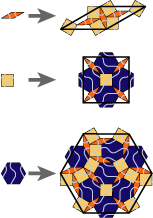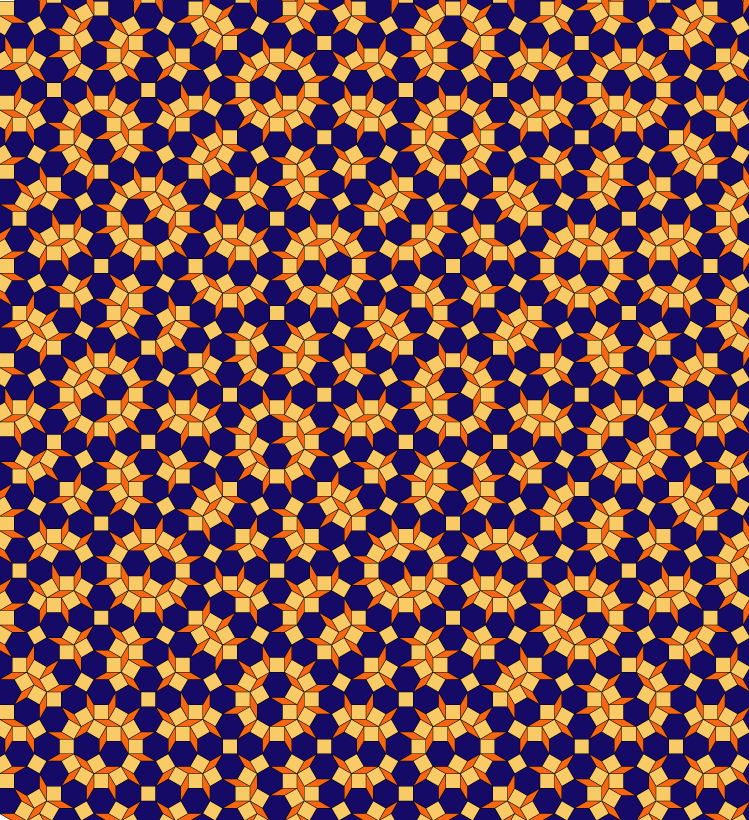Socolar
- Canonical Substitution Tiling
- Euclidean Windowed Tiling
- MLD Class Shield and Socolar
- Matching Rules
- Parallelogram Tiles
- Polytopal Tiles
- Polytopal Windowed Tiling
Discovered by
Info
In connection with physical quasicrystals, the most interesting 2dim tilings are based on 5-, 8-, 10- and 12-fold rotational symmetry. This 12-fold tiling was studied thoroughly in [Soc89], where J. Socolar described the generating substitution as well as the local matching rules and the cut and project scheme, As well as the Penrose Rhomb tilings (5- resp. 10-fold) and the Ammann-Beenker tilings (8-fold), it allows a decoration by Ammann bars (see [GS87]). An appropriate decoration of the tiles with Ammann bars force the local matching rules. That means, a tile decoration by lines, extending beyond the boundary of tiles (Socolars ‘secondary Ammann bars’), together with the condition that all lines has to extend to straight biinfinite lines throughout the tiling, will force aperiodicity.
As in tilings by Penrose Rhomb , this one also contains ‘Conway worms’ (see [GS87]). I.e., one can find arbitrary long sequences of tiles extending along a line, which obey the rules of a 1dim quasiperiodic sequence. Here, one kind of Conway worm is e.g. … R S R r R S R S… where R is the long diagonal of a rhomb, r the short one and S the diagonal of a square.
The Socolar tiling is mld to the Shield tiling found by F. Gähler, as well as some other dodecagonal tilings as the plate and the wheel tilings, which were described later by H.-U. Nissen.
Substitution Rule

Patch

References
[Soc89]
Socolar, J E S
Simple octagonal and dodecagonal quasicrystals
Phys. Rev. B
1989,
39,
pp. 10519-10551,
MR0998533
[GS87]
Grünbaum, B and Shephard, G.C.
Tilings and Patterns
W.H. Freeman
1987,
MR0857454